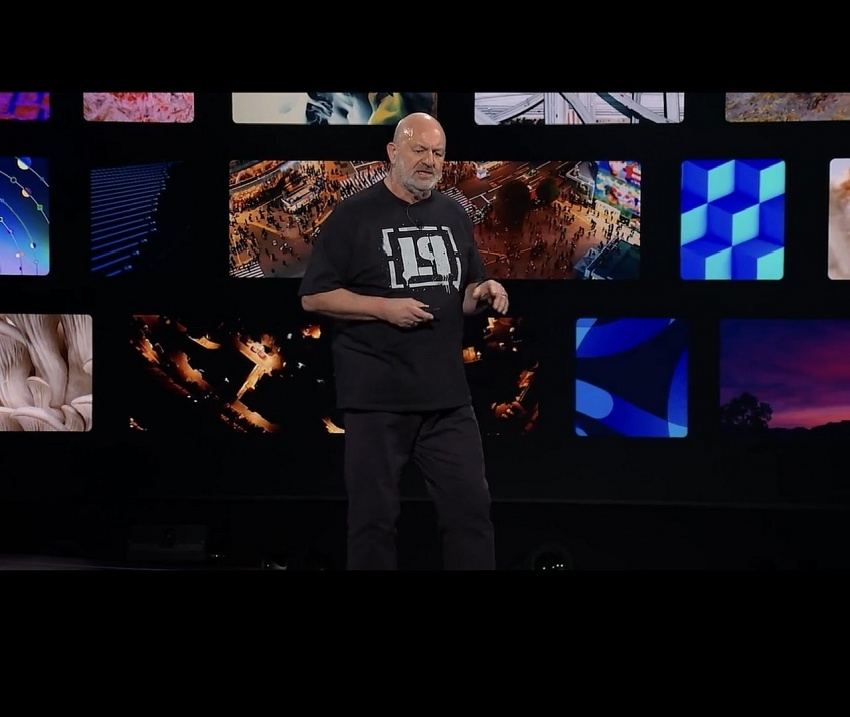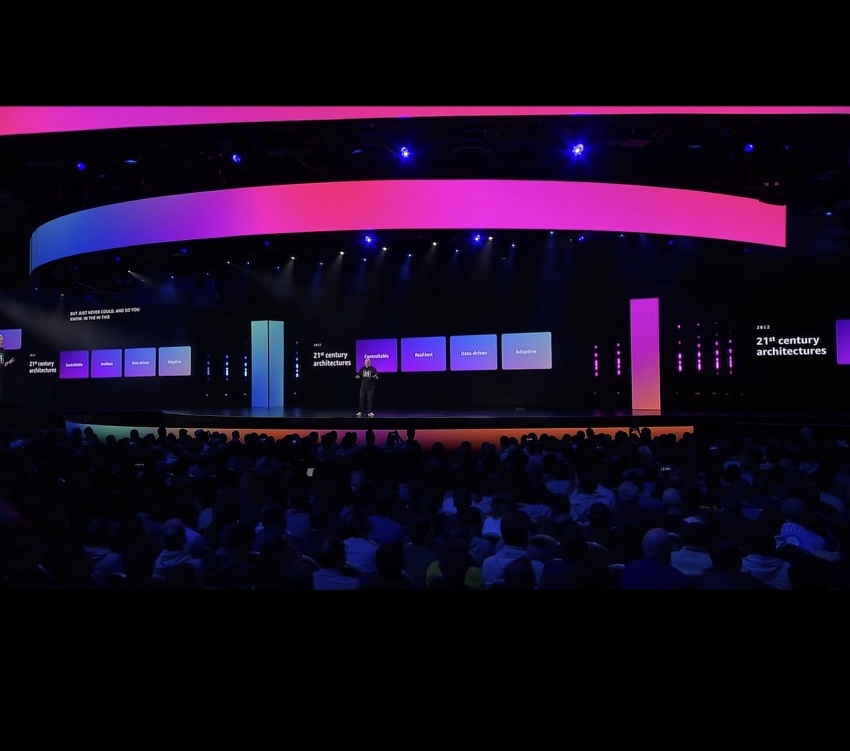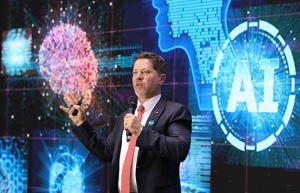Five tech predictions for 2025 and beyond
We have entered an era of unprecedented societal challenges and rapid technological advancements. Harnessing technology for good has become both an ethical imperative and a profitable endeavour. From clean energy innovations unlocking new avenues for sustainable development to AI-powered tools tipping the scales in the fight against disinformation, we are witnessing technology augment human ingenuity in inspiring ways.
The rise of intention-driven technologies is reshaping our relationship with the digital world, promoting focus and wellbeing over mere attention capture. All the while, a mission-driven workforce is emerging, more eager to tackle hard human problems than chase the bottom line.
In the coming years, using technology for positive impact will not just be possible, it will redefine the way we think about success. There are five tech predictions for 2025 and beyond.
 |
| Dr. Werner Vogels, Amazon CTO, delivered a keynote at re:Invent 2024. Photo: AWS |
The first is the workforce of tomorrow is mission-driven. The workforce of tomorrow will not only be driven by financial success and career progression, but by a deeper desire to create positive change in the world. The organisations and businesses that acknowledge this shift and embrace purpose-driven work will be poised for long-term success.
As the world faces urgent challenges around sustainability, social equity, food and economic security, and responsible AI usage, a quiet revolution is unfolding in the job market, a move towards work that benefits humanity. Across industries and generations, there is a palpable shift in worker values and preferences, with a growing number of people seeking roles that allow them to make a meaningful impact on society and the environment.
The second is a new era of energy efficiency. Surging power demand and climate imperatives are driving a transformation in how we generate, store, and consume energy. The expansion of nuclear and continued growth of renewable energy will lay the groundwork for a future where our energy infrastructure is a catalyst for innovation, not a constraint.
 |
| Photo: AWS |
Two years ago, I predicted a surge of innovation in smart energy technologies, focusing on storage solutions, decentralised grids, and intelligent consumption systems. This was a response to the global energy crisis and the unprecedented challenges posed by the COVID-19 pandemic. However, the landscape has evolved drastically since then. The advent of generative AI, coupled with a broad push for electrification across various sectors – from transportation to manufacturing – have significantly increased energy demand. These developments have intensified the urgency for more robust and scalable energy solutions.
In the last decade, renewables, such as wind and solar have become increasingly scalable and reliable, marking a significant milestone in our transition towards cleaner energy production. They have been instrumental in reducing our carbon footprint and decentralising production. In China, renewables account for 37 per cent of total energy capacity, and by 2028, renewables are projected to generate 42 per cent of the global energy supply. Yet, despite their rapid advancement and widespread adoption, renewables alone cannot meet our accelerating energy demands fast enough. To bridge this gap, we need a constant, modular, round-the-clock complement.
The third is technology tips the scales in the discovery of truth. As disinformation spreads at unprecedented rates, a new wave of AI-powered tools will emerge to empower journalists, researchers, and engaged citizens in their quest for truth. This technological revolution will democratise investigative capabilities, accelerate fact-checking, and begin to close the gap between the spread of misinformation and its debunking.
We have rapidly shifted from an era of prolonged news cycles that lasted weeks or months to a constant stream of updates that break at the speed of a click. Social media platforms have become a primary source for disseminating and consuming news, and it’s never been harder to distinguish between what’s true and false. A world where being first is more important than being correct has eroded public trust in traditional media and news outlets. The implications are profound: a significant portion of the populace struggles to identify genuine information (52 per cent), leading to widespread scepticism and sharing of misinformation. Yet, if technology has helped fuel the crisis, it is also the key to solving it.
In the years ahead, we can expect a shift in the direction of fact. The development and democratisation of these tools will level the playing field, allowing accurate information to flow as rapidly as disinformation. This transition will not only help to restore public trust in traditional news sources, but also enhance the overall quality of discourse across digital platforms. The impact will be far-reaching, benefiting consumers, businesses safeguarding their reputations, and governments and organisations striving to maintain informed populaces.
The fourth is open data drives decentralised disaster preparedness. Disaster resilience will be fundamentally transformed through the power of hyperlocal, community-sourced data. This shift will redefine disaster management from a top-down, reactive model to one that is proactive, decentralised, and community-driven.
From Typhoon Alley to the Australian bush, the severity and frequency of natural disasters worldwide are on the rise. Today’s disaster response systems often struggle with fragmented or inaccessible data, particularly in vulnerable and isolated communities. During recent events, such as Hurricanes Helene and Milton in the southeastern United States, inland areas were severely impacted, with critical resources unmapped because they were considered low-risk for hurricanes. These events underscore a critical truth: in an age of escalating disasters, timely and accessible data is not just beneficial, it’s essential.
Ultimately, by embracing a community-centric, data-forward model, we are building a future where technology augments human resilience, enabling communities to navigate an increasingly unpredictable world with confidence and autonomy.
And the fifth is intention-driven consumer technology takes hold. A subtle shift is underway that is redefining our relationship with consumer technology. As more and more people look for a refuge from constant distraction, devices are emerging that prioritise mindfulness, intentionality, and deep thinking over a barrage of fleeting stimuli. In 2025 and beyond, technology will empower rather than distract us, and we will be better for it.
 | Digital financial services on upward trend in Vietnam Vietnam continues to see an upward trend in digital financial service adoption as digital payments gain traction. |
 | AI: unstoppable trend of the future At MMA Impact Vietnam 2023 in Ho Chi Minh City on October 26, MMA Global CEO Greg Stuart spoke to VIR’s Bich Ngoc about integrating AI into marketing and branding activities. |
 | A tale of two trends: Digital transformation and net-zero transition The world is changing faster than we imagine, and the pace of change is only going to accelerate. Tim Evans, CEO of HSBC Vietnam, explains why we must adapt and find ways to navigate the challenges, as they will ultimately also present opportunities for those prepared for them. |
What the stars mean:
★ Poor ★ ★ Promising ★★★ Good ★★★★ Very good ★★★★★ Exceptional
Themes: Digital Transformation
Related Contents
Latest News
More News
- 72 nations sign landmark Hanoi cybercrime convention (October 26, 2025 | 18:00)
- UN Secretary-General commends Vietnam’s global leadership (October 26, 2025 | 09:00)
- APEC finance ministers convene to tackle regional challenges (October 22, 2025 | 17:31)
- Rewiring global trade: ASEAN’s rise as supply chain hub (October 17, 2025 | 11:40)
- Vietnam attends first World Nuclear Week Forum in Russia (September 26, 2025 | 10:50)
- Vietnam attends 69th session of IAEA General Conference (September 16, 2025 | 10:00)
- ADB, WB pledge over 12 billion USD for ASEAN power grid, renewable energy projects (August 15, 2025 | 14:18)
- Lowy Institute proposes AI-based tobacco control solutions for ASEAN (August 15, 2025 | 14:14)
- Cloud computing policy to position Malaysia as regional hub by 2030 (August 15, 2025 | 14:11)
- Thailand, Cambodia suffer numerous cyber attacks (August 05, 2025 | 16:19)

 Tag:
Tag:

























 Mobile Version
Mobile Version